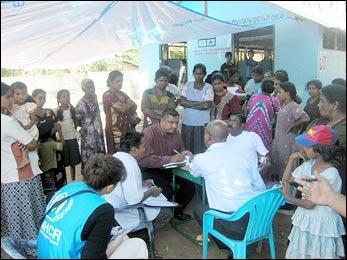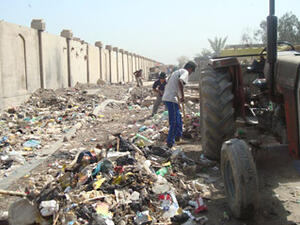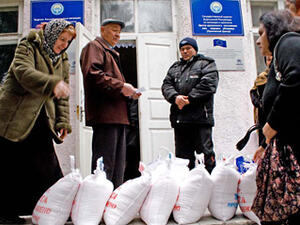Increasing intimidation exacerbates displacement in Sri Lanka
Increasing intimidation exacerbates displacement in Sri Lanka

Many thousands have been displaced by violence since 10 April. With peace talks on hold, their future remains uncertain.
COLOMBO, Sri Lanka, April 28 (UNHCR) - UNHCR is calling for access to all areas where people have fled their homes in recent days in north-eastern Sri Lanka following the recent upsurge of violence in the island nation. Meanwhile, with tensions still high, a rising trend of intimidation also threatens people who are already displaced in government assistance centres to flee again.
The refugee agency estimates that between 7,000 and 8,000 people fled from a cluster of villages in the Muttur area, south-east of the town of Trincomalee, following government air strikes on Tuesday and Wednesday.
Earlier, on April 21, some 8,500 people were displaced as a result of claymore mine attacks in Muttur. And on April 10, an estimated 3,000 other residents were displaced following a market place bombing in Trincomalee town that killed 16 people and sparked an upsurge in inter-ethnic violence that included several claymore mine attacks and the burning and looting of houses. The displaced sought temporary shelter in schools, churches and other public buildings.
Although the situation seems to have stabilized in most parts of the conflict zone, UNHCR remains seriously concerned about the welfare of these people.
A joint UN assessment team had gone to the area on Friday, UNHCR spokesman Ron Redmond told a regular briefing of journalists in Geneva.
"Some humanitarian agencies on the ground trying to gain access to affected areas are still experiencing difficulties in reaching certain villages and displaced populations. UNHCR is calling on all parties to allow immediate access to affected populations," he said, adding that in many other parts the situation was improving. "With the easing of fighting between the government and the Liberation Tigers of Tamil Eelam (LTTE) and the reopening of access roads, we expect that many of the displaced will begin to return to their homes. Some are already returning to their properties during daylight hours, but spending nights in displacement locations."
In the Jaffna area, frontline crossings have been reopened and some humanitarian agencies resumed their monitoring role with vehicles and personnel allowed to move between military and LTTE areas.
"We're also concerned about reports of intimidation by some local residents of some internally displaced people in government-run welfare centres," Redmond added.
This has caused the situation in Vavuniya and surrounding areas to remain tense. Earlier in the week, reports were received from displaced people in one Vavuniya welfare centre that a group of masked men had been entering the centre and intimidating those staying there. Similar incidents have taken place in other welfare centres in conflict-affected areas.
UNHCR's representative in Colombo, Amin Awad, said this pattern of intimidation was threatening to cause a second wave of displacement.
"UNHCR warns against senseless attempts to intimidate internally displaced persons taking sanctuary in government-run welfare centres, forcing them to flee, creating a secondary displacement and compounding the challenges facing humanitarian agencies working in affected areas," he said.
"We have a zero tolerance policy on such actions when it comes to the protection and well-being of the internally displaced," Awad added.
UNHCR also reported that a trickle of refugees had been arriving in the southern Indian state of Tamil Nadu.

UNHCR Representative Amin Awad (seated, back to the camera) meeting local authorities at a church in Trincomalee where around 300 people are sheltering after fleeing the recent upsurge in violence.
"Since April 22, there have been a few Sri Lankan refugees - 16 to be exact - arriving in southern India's Tamil Nadu state," Redmond said in Geneva. He said since early January, a total of 596 Sri Lankan refugees have arrived in Tamil Nadu, most as a result of increased violence in December and early 2006. There had been no arrivals for about 10 days before April 22, when the latest violence erupted.
He added: "We have seen Sri Lankan media reports that people fleeing the island are being intercepted at sea, but UNHCR cannot confirm these accounts."
By Lyndon Jeffels
UNHCR Colombo









